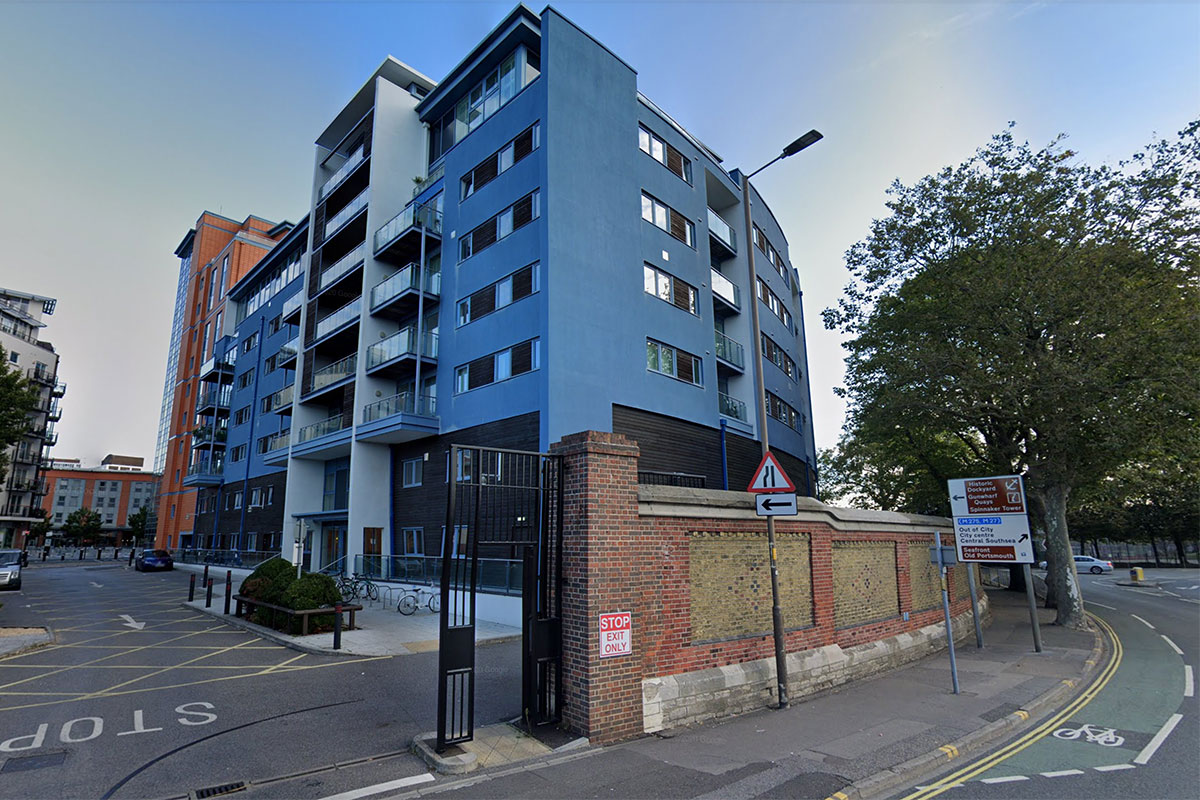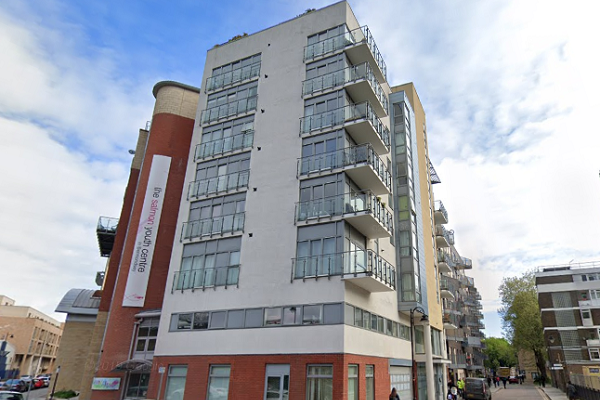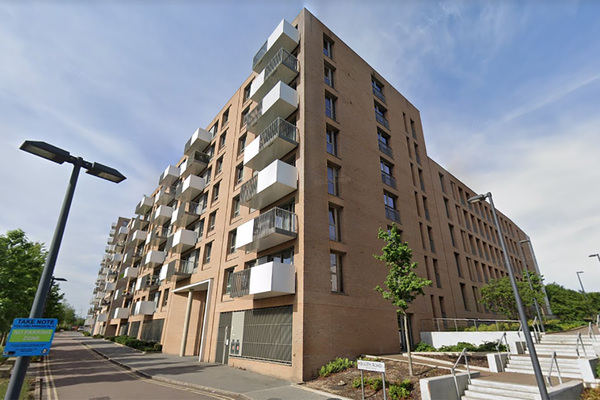You are viewing 1 of your 1 free articles
EWS crisis: leaseholders face £50,000 cladding bills despite EWS form stating no work is needed
Leaseholders living in a block in Portsmouth face potential bills topping £50,000 to remove cladding despite one external wall system (EWS1) form for the block stating that no work is needed, Inside Housing can reveal.

The Blue Building in Portsmouth’s Gunwharf Quays currently has two conflicting EWS1 results after checks were carried out on the five-storey block by two different companies.
One of these was commissioned by the block’s management company Encore Estates, which deemed that the building required expensive remedial work, while the other one was commissioned by the block’s developer, Berkeley, and concluded the cladding materials are low risk and did not require remediation.
However, due to the developer not releasing its cladding survey alongside the EWS1 judgement, the resident management company (RMC), through Encore, has opted to follow the advice given in the report that it commissioned, meaning leaseholders have been hit with interim fire safety costs and could be on the hook for huge cladding removal bills.
This includes an £11,000-a-month bill for a waking watch, which has been in place for six months, and a potential £1.7m remedial works bill for the building, which could see some leaseholders pay £50,000 to cover the work.
The situation at the Blue Building is the latest in a series of stories published by Inside Housing this week highlighting the issues with the EWS1 system that is currently causing chaos and confusion in the UK flat sale market.
The EWS1 process was created by the Royal Institution of Chartered Surveyors (RICS) and supported by the government back in December 2019. It requires a qualified professional to inspect a building’s external wall and sign a form that rules whether combustible materials are present in the external wall of a building, and require remedial work, or whether no remedial work is needed and a sale can progress.
However, there is currently a lack of clear guidance or standards in place to ensure that there is a uniform approach to how inspectors carry out EWS1 checks or decide whether a block needs work. This means that in some cases differing EWS1 ratings are being given for the same block.
Last year, Encore Estates, on behalf of the RMC, which is responsible for the block’s fire safety, requested that Berkeley secure an EWS1 check for the building after a number of leaseholders trying to sell were asked for one from their banks.
Berkeley informed Encore that it would secure an EWS check but there would be delays due to the shortage of trained people available to carry out the checks.
With the RMC under increasing pressure from leaseholders trying to sell, Encore Estates commissioned a separate EWS1 check, which came back as a B2. This means the fire engineer inspecting the building has found combustible materials in its external wall and deemed that they need to be removed.
By this point, Berkeley had secured its own inspection, with the fire engineer giving the building a B1, which means that while combustible materials are present on the block, the fire risk is low and remedial work is not needed.
However, after the RMC requested the detailed cladding survey, the more detailed report that goes alongside the EWS1 form, from Berkeley, the house builder would not provide this.
Inside Housing has come across several examples of developers or building owners unwilling to provide the accompanying cladding report to leaseholders and management companies.
Without this report, the block’s management company opted to follow the advice of the EWS it commissioned, for which they did have the cladding report. This meant a waking watch was installed in October and the management company is currently preparing the building for remedial works.
However, there are now concerns that this work could be premature, particularly in light of the Berkeley-commissioned report deeming the block not to be in need of work.
“The thing is, we don’t know who is right,” said Peter Kemp, a leaseholder at the Blue Building. "If the B2 rating is wrong, arguably there may be leaseholders unnecessarily losing their homes or worse still, unnecessarily going bankrupt.”
Inside Housing understands that despite seeing the report commissioned by Encore, the engineer that Berkeley appointed sticks by their B1 conclusion. It also understands that while the house builder is sympathetic with the situation of leaseholders, it believes differences in opinion on EWS forms can occur.
Encore Estates told Inside Housing that it did not believe residents should not meet the cost of remediation works and it was working working hard with the management company, residents and government to achieve this.
It said that it had already secured government funding to cover the cost of an alarm being installed on the block, which would remove the need for a waking watch. It had also made an application through the government’s Building Safety Fund and had made it through the first funding stage.
Berkeley declined to comment.
Encore Estates statement in full
“The safety and security of residents who live in the Blue Building is paramount. During the past few months we have been issuing fortnightly updates to all residents so that everyone is fully informed of progress and we are committed to maintaining this communication.
“Encore acts for the resident-owned management company (RMC) and have been working with the RMC obtaining an independent external wall assessment and a fire engineer’s facade review.
“The external wall assessment and facade review recommended interim and remedial measures.
“The interim measure of the waking watch has been in place since last October. We were also pleased to reduce the waking watch costs by retraining existing site staff. An alarm system will be installed so that waking watch costs can also come to an end.
“On behalf of residents an application has been successful for government funding of the alarm costs.
“An application was made to the Building Safety Fund in July 2020 for the cost of the remedial measures to avoid those costs falling to residents. We are pleased that the application has been invited to the next funding stage. “Homes England are currently guiding us through that process and a lead consultant has been appointed to obtain tenders for the remediation work. Residents will be updated fortnightly.
“We have also been working with the Portsmouth MP Stephen Morgan, whose office has provided full support. We continue to engage with all stakeholders which include Hampshire Fire and Rescue and the original developer to seek a satisfactory solution at no cost to residents.
“Encore’s position remains that residents should not have to meet remediation costs and are working hard with the RMC, residents and the MHCLG to achieve this.”
Sign up for our fire safety newsletter
Already have an account? Click here to manage your newsletters













